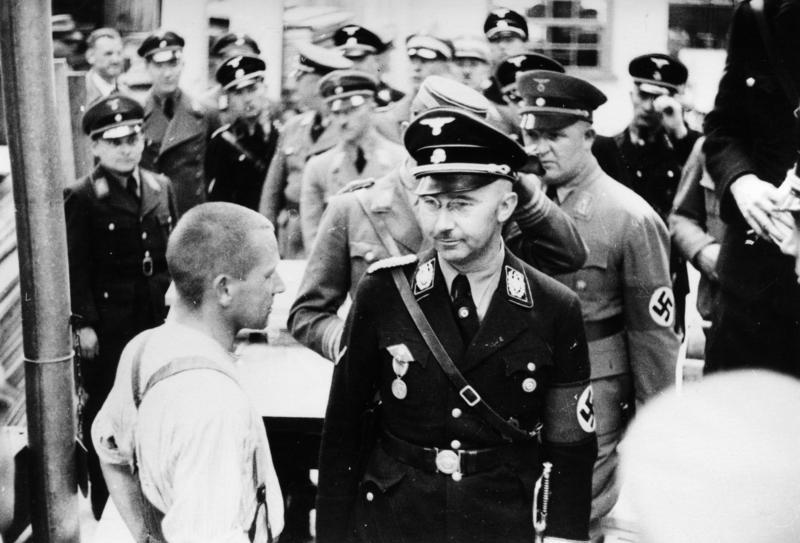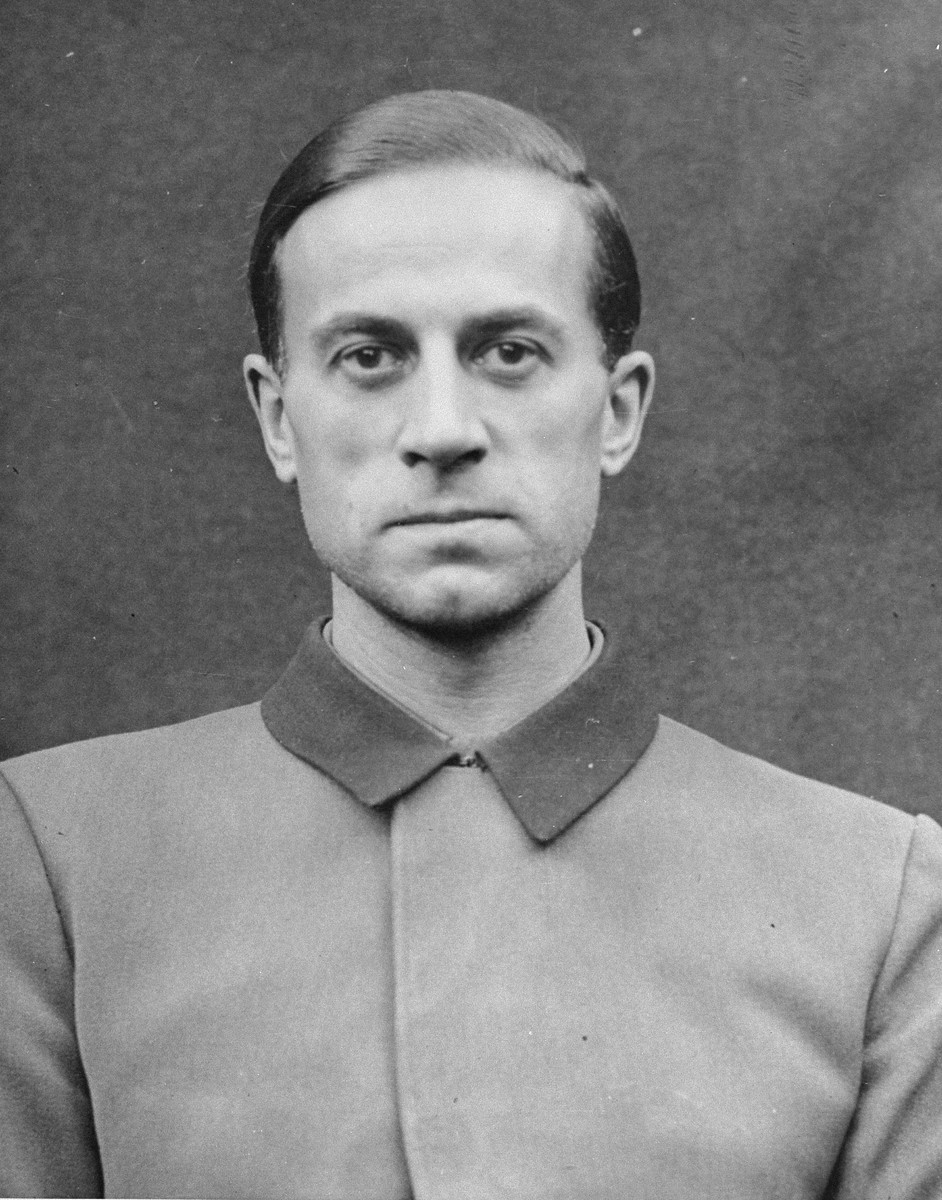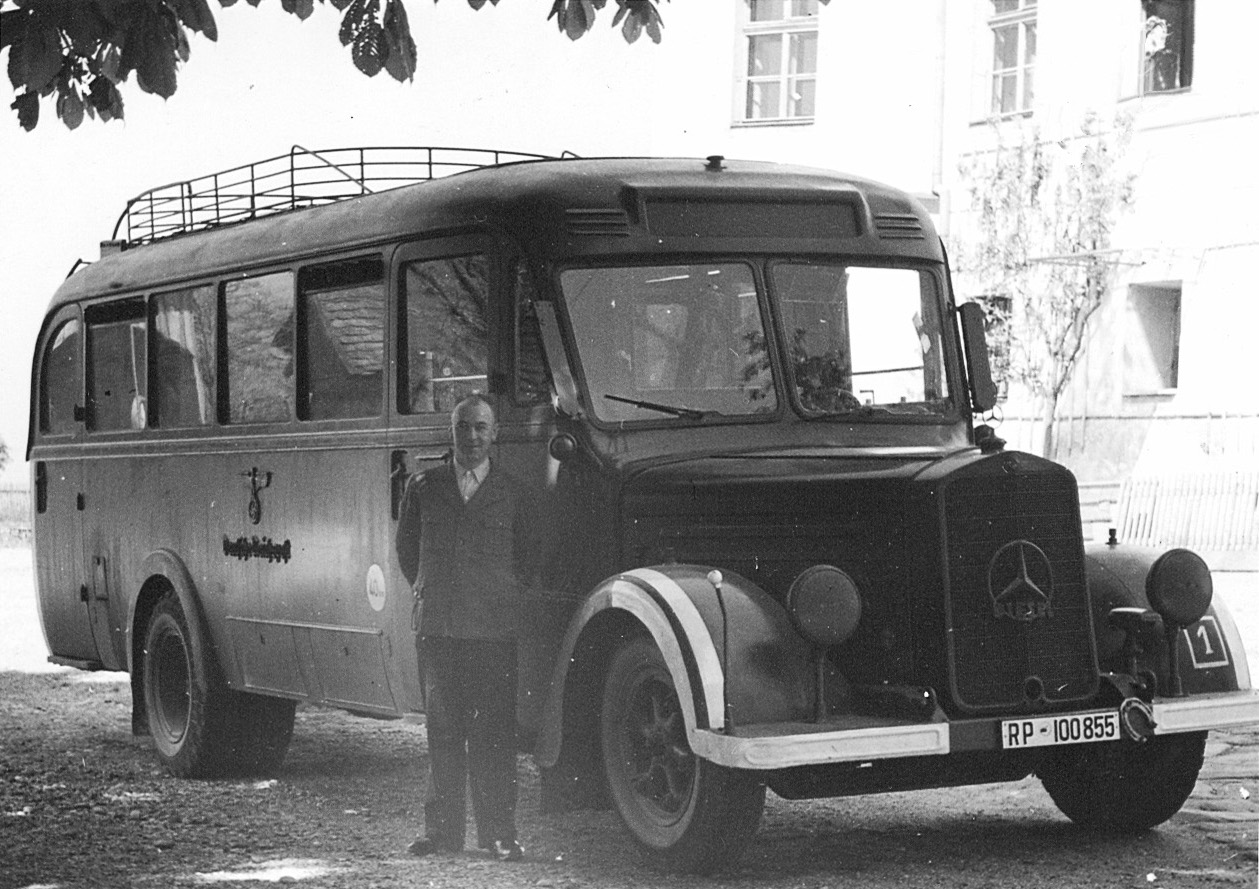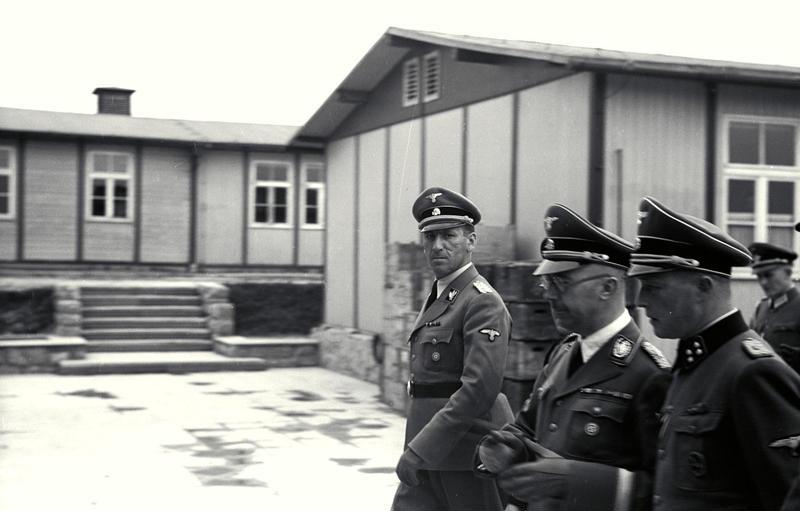Sonderbehandlung on:
[Wikipedia]
[Google]
[Amazon]
 (, "special treatment") is any sort of preferential treatment. However, the word ''Sonderbehandlung'' was used as an
(, "special treatment") is any sort of preferential treatment. However, the word ''Sonderbehandlung'' was used as an
 By the summer of 1941, Action T4 became widespread public knowledge in Germany (and also in neutral countries and to Germany's enemies), and on August 24, 1941,
By the summer of 1941, Action T4 became widespread public knowledge in Germany (and also in neutral countries and to Germany's enemies), and on August 24, 1941,
 The term first appeared on September 20, 1939 in a decree by the
The term first appeared on September 20, 1939 in a decree by the
 In
In  Several instances of this unspecific language in reference to equipment can be found in documents concerning
Several instances of this unspecific language in reference to equipment can be found in documents concerning
 Himmler was so sure that almost everyone knew what "special treatment" meant, and ordered for it to be replaced with the even more vague ("guided through"), even though the document in question was top secret. The camps in question in the General Government were
Himmler was so sure that almost everyone knew what "special treatment" meant, and ordered for it to be replaced with the even more vague ("guided through"), even though the document in question was top secret. The camps in question in the General Government were 
 (, "special treatment") is any sort of preferential treatment. However, the word ''Sonderbehandlung'' was used as an
(, "special treatment") is any sort of preferential treatment. However, the word ''Sonderbehandlung'' was used as an euphemism
A euphemism () is an innocuous word or expression used in place of one that is deemed offensive or suggests something unpleasant. Some euphemisms are intended to amuse, while others use bland, inoffensive terms for concepts that the user wishes ...
for mass murder
Mass murder is the act of murdering a number of people, typically simultaneously or over a relatively short period of time and in close geographic proximity. The United States Congress defines mass killings as the killings of three or more pe ...
by Nazi functionaries and the SS, who commonly used the abbreviation ''S.B.'' in documentation. It first came to prominence during Action T4
(German, ) was a campaign of mass murder by involuntary euthanasia in Nazi Germany. The term was first used in post-war trials against doctors who had been involved in the killings. The name T4 is an abbreviation of 4, a street address of t ...
, where SS doctors killed mentally ill and disabled patients between 1939 and 1941, and was one of a number of nonspecific words the Nazis used to document mass murder
Mass murder is the act of murdering a number of people, typically simultaneously or over a relatively short period of time and in close geographic proximity. The United States Congress defines mass killings as the killings of three or more pe ...
and genocide
Genocide is the intentional destruction of a people—usually defined as an ethnic, national, racial, or religious group—in whole or in part. Raphael Lemkin coined the term in 1944, combining the Greek word (, "race, people") with the ...
. Another notable example was .
This term was also used to imprecisely refer to the equipment used to perpetrate their crimes, such as gas chamber
A gas chamber is an apparatus for killing humans or other animals with gas, consisting of a sealed chamber into which a poisonous or asphyxiant gas is introduced. Poisonous agents used include hydrogen cyanide and carbon monoxide.
History
...
s and Zyklon B
Zyklon B (; translated Cyclone B) was the trade name of a cyanide-based pesticide invented in Germany in the early 1920s. It consisted of hydrogen cyanide (prussic acid), as well as a cautionary eye irritant and one of several adsorbents such ...
. The true meaning of was widely known in the SS, and in April 1943, Heinrich Himmler
Heinrich Luitpold Himmler (; 7 October 1900 – 23 May 1945) was of the (Protection Squadron; SS), and a leading member of the Nazi Party of Germany. Himmler was one of the most powerful men in Nazi Germany and a main architect of th ...
was so concerned about the security of it that he had it redacted in a secret report.
Berel Lang states that disguised language was used "...not only in communications issued to the Jewish public when the intention of those issuing the communications was to deceive the Jews in order to minimize the likelihood of resistance, but also in addresses to the outside world and, perhaps more significantly, in internal communications as well, among officials who unquestionably knew (who were themselves sometimes responsible for) the linguistic substitutions stipulated by the language rules."Lang (2003), p. 93
Background
 By the summer of 1941, Action T4 became widespread public knowledge in Germany (and also in neutral countries and to Germany's enemies), and on August 24, 1941,
By the summer of 1941, Action T4 became widespread public knowledge in Germany (and also in neutral countries and to Germany's enemies), and on August 24, 1941, Hitler
Adolf Hitler (; 20 April 188930 April 1945) was an Austrian-born German politician who was dictator of Nazi Germany, Germany from 1933 until Death of Adolf Hitler, his death in 1945. Adolf Hitler's rise to power, He rose to power as the le ...
ordered the joint chief of the operation Dr. Karl Brandt to halt it due to public protest; however, the operation continued, not only out of the public eye, but also in greater intensity.Friedlander (1997), p. 111 Hitler did not want to run the risk of an order publicly embarrassing him again and, as a result, the explicit order to carry out the Holocaust
The Holocaust, also known as the Shoah, was the genocide of European Jews during World War II. Between 1941 and 1945, Nazi Germany and its collaborators systematically murdered some six million Jews across German-occupied Europe; ...
was given by him orally. Even if there had been any written instances of this order, they would have almost certainly been destroyed by the Nazis when they realised their defeat was inevitable.
Where the Nazis had to document murder, was one of a number of euphemisms used. The Action T4 doctors used ("disinfected") to document the gassing of mentally ill and handicapped individuals.Friedlander (1997), p. 231 The actual plan to exterminate the Jews of Europe was called ("Final Solution to the Jewish Question
The Final Solution (german: die Endlösung, ) or the Final Solution to the Jewish Question (german: Endlösung der Judenfrage, ) was a Nazi plan for the genocide of individuals they defined as Jews during World War II. The "Final Solution to th ...
"). Other words to describe extermination operations included:
* ("evacuation")
* ("expulsion")
* ("resettlement")
* ("thinning out" – as in the removal of inhabitants from a ghetto)Lang (2003), p. 92
* ("pacification")
* or ("special pacification")
* ("having-been-migrated")
* ("cleansing")
* ("directed" or worked through in a manner in accordance with the )
The Posen speeches
The Posen speeches were two speeches made by Heinrich Himmler, the head of the SS of Nazi Germany, on 4 and 6 October 1943 in the town hall of Posen (Poznań), in German-occupied Poland. The recordings are the first known documents in which a m ...
made by Heinrich Himmler in October 1943 are the first known documents in which a high-ranking member of the Nazi government spoke explicitly about the perpetration of the Holocaust during the war. Himmler mentions the or 'evacuation of the Jews', which he uses synonymously with their extermination. At one point in the speech, Himmler says: "elimination of the Jews, extermination, we're doing it", briefly pausing in the middle of "elimination" () before going on to say "extermination" (). His hesitation in the middle of saying "elimination" can be considered as a quick mental check to see whether or not it would have been acceptable to use such words in front of his given audience; however, as the speech was given to the seniority of the SS in private, such language would have been acceptable to use. This has been compared to another incident of self-verification in the opposite way, where Josef Goebbels, in his Total War speech
The ''Sportpalast'' speech (german: link=no, Sportpalastrede) or Total War speech was a speech delivered by German Propaganda Minister Joseph Goebbels at the Berlin Sportpalast to a large, carefully selected audience on 18 February 1943, as t ...
on February 18, 1943, begins to say ('extermination of Jewry') but switches to saying , bearing in mind that he is speaking very publicly. His resulting phrasing is , which can be likened to "exterm... elimination" in English.
Usage
 The term first appeared on September 20, 1939 in a decree by the
The term first appeared on September 20, 1939 in a decree by the Gestapo
The (), abbreviated Gestapo (; ), was the official secret police of Nazi Germany and in German-occupied Europe.
The force was created by Hermann Göring in 1933 by combining the various political police agencies of Prussia into one orga ...
and chief SS- Reinhard Heydrich
Reinhard Tristan Eugen Heydrich ( ; ; 7 March 1904 – 4 June 1942) was a high-ranking German SS and police official during the Nazi era and a principal architect of the Holocaust.
He was chief of the Reich Security Main Office (inclu ...
to all state police departments:
However, the usage is directed against Germans rather than Jews (it relates to "the principles of internal state security in the war"). Nevertheless, the law allowed for the killing of any person the regime wished. A memo dated six days later from a meeting at the defines with "execution" following it in brackets.
A report from the Eastern Front dated October 25, 1941, reads that "due to the grave danger of epidemic, the complete liquidation of Jews from the ghetto in Vitebsk was begun on October 8, 1941. The number of Jews to whom special treatment is to be applied is around 3,000." An excerpt of a decree dated February 20, 1942, from the ''RSHA'' and written by Himmler regarding the treatment of " foreign civilian workers" advises that in particularly difficult cases, application should be made to the ''RSHA'' for special treatment, adding that "special treatment takes place by hanging." In a letter to the ''RSHA'', Heinz Trühe requests additional gas van
A gas van or gas wagon (russian: душегубка, ''dushegubka'', literally "soul killer"; german: Gaswagen) was a truck reequipped as a mobile gas chamber. During the World War II Holocaust, Nazi Germany developed and used gas vans on a large ...
s for "...a transport of Jews, which has to be treated in a special way..."Zimmerman, John C. (2000), p. 22 The gas vans were vehicles containing an airtight compartment in which the victims were locked and the exhaust gas
Exhaust gas or flue gas is emitted as a result of the combustion of fuels such as natural gas, gasoline (petrol), diesel fuel, fuel oil, biodiesel blends, or coal. According to the type of engine, it is discharged into the atmosphere through an ...
was pumped into, killing the victims with the combined effects of carbon monoxide poisoning
Carbon monoxide poisoning typically occurs from breathing in carbon monoxide (CO) at excessive levels. Symptoms are often described as " flu-like" and commonly include headache, dizziness, weakness, vomiting, chest pain, and confusion. Large ...
and suffocation
Asphyxia or asphyxiation is a condition of deficient supply of oxygen to the body which arises from abnormal breathing. Asphyxia causes generalized hypoxia, which affects primarily the tissues and organs. There are many circumstances that can ...
.
Equipment
 In
In German
German(s) may refer to:
* Germany (of or related to)
**Germania (historical use)
* Germans, citizens of Germany, people of German ancestry, or native speakers of the German language
** For citizens of Germany, see also German nationality law
**Ge ...
, , meaning "special", can be used to form compound nouns. As well as in reference to actions, the Nazis used euphemisms to refer to the actual equipment used to carry out killing. In his letter, Trühe refers to the vans as ("S-vans"); ("special vans") in full. Other documented references include ("special vehicle"), ("special van"), and ("auxiliary equipment").
 Several instances of this unspecific language in reference to equipment can be found in documents concerning
Several instances of this unspecific language in reference to equipment can be found in documents concerning Auschwitz concentration camp
Auschwitz concentration camp ( (); also or ) was a complex of over 40 concentration and extermination camps operated by Nazi Germany in occupied Poland (in a portion annexed into Germany in 1939) during World War II and the Holocaust. I ...
. A letter dated August 21, 1942 referred to 'Bunker 1' and 'Bunker 2' (farmhouses west of Birkenau
Auschwitz concentration camp ( (); also or ) was a complex of over 40 concentration and extermination camps operated by Nazi Germany in occupied Poland (in a portion annexed into Germany in 1939) during World War II and the Holocaust. It con ...
converted into gas chambers) as ("bathing installations for special actions"). In the letter, this is given in quotes, further suggesting the euphemistic nature of what is meant. On blueprints, the basement gas chambers of Crematoria II and III were simply marked as ("basement morgue 1"), and the basement undressing rooms were marked as . However, a letter dated November 27, 1942 to chief Auschwitz architect Karl Bischoff
Karl Bischoff (9 August 1897 – 2 October 1950) was a German architect, engineer and SS-''Sturmbannführer''. He served at Auschwitz as chief of the Central Construction Office of the Waffen-SS. While there he was chief of construction of the ...
referred to morgue 1 of Crematorium II as the ("special cellar"). Pressac, Jean-Claude; van Pelt, Robert-Jan. "The Machinery of Mass Murder at Auschwitz" in ''Anatomy of the Auschwitz Death Camp'', p. 223 A letter from Rudolf Jährling concerning Crematoria II and III to oven builders J.A. Topf and Sons dated March 6, 1943, refers to morgue 2 as an ('undressing room').Pressac (1989), p. 221 The units of prisoners forced to empty gas chambers and load bodies into ovens were known as the ("special squads"). A document dated August 26, 1942 granted the camp authorities to send a truck "... to Dessau to pick up material for special treatment..." - Dessau was one of two places where Zyklon B
Zyklon B (; translated Cyclone B) was the trade name of a cyanide-based pesticide invented in Germany in the early 1920s. It consisted of hydrogen cyanide (prussic acid), as well as a cautionary eye irritant and one of several adsorbents such ...
was manufactured. Standard usage of the term for killing at Auschwitz applied. A letter dated October 13, 1942, signed by Bischoff, states that construction of new crematoria facilities "... was necessary to start immediately in July 1942 because of the situation caused by the special actions."Pressac (1989), p. 198 On September 8, 1943, 5,006 Jews were transferred from Theresienstadt to Auschwitz under the designation "SB six months."Langbein (2004), p. 47 Six months later on March 9, 1944, those still alive were gassed.
In his diary, and doctor Johann Kremer describes seeing a mass gassing for the first time:
Three days later, Kremer described the mass gassing of emaciated prisoners, nicknamed :
In a letter dated January 29, 1943 by Bischoff to Hans Kammler
Hans Kammler (26 August 1901 – 1945 ssumed was an SS-Obergruppenführer responsible for Nazi civil engineering projects and its top secret weapons programmes. He oversaw the construction of various Nazi concentration camps before being put ...
, Bischoff refers to basement morgue 1 of Crematorium II at Auschwitz as a , literally "gassing cellar". In the letter, the word is underlined, and at the top of the document is written: There was a very clear policy in the architecture office that words such as "gas chamber" should not be used; Second Lieutenant Kirschnek should be informed of this slip. Citing this unique letter, Robert Jan van Pelt states that in using "special action" or "special treatment" in place of extermination and killing, the first Holocaust deniers
Holocaust denial is an antisemitic conspiracy theory that falsely asserts that the Nazi genocide of Jews, known as the Holocaust, is a myth, fabrication, or exaggeration. Holocaust deniers make one or more of the following false statements:
* ...
were the Nazis themselves, in that they attempted to deny to themselves what they were doing.
Sensitivity
Heinrich Himmler became increasingly concerned about the security of documenting the destruction of the Jews.Shermer ''et al'' (2009), p. 223 On April 9, 1943, he wrote a secret letter to Heydrich's successor as chief of the Gestapo and SD,Ernst Kaltenbrunner
Ernst Kaltenbrunner (4 October 190316 October 1946) was a high-ranking Austrian SS official during the Nazi era and a major perpetrator of the Holocaust. After the assassination of Reinhard Heydrich in 1942, and a brief period under Heinrich Hi ...
, concerning the Korherr Report
The Korherr Report is a 16-page document on the progress of the Holocaust in German-controlled Europe. It was delivered to Heinrich Himmler on March 23, 1943, by the chief inspector of the statistical bureau of the '' SS'' and professional statis ...
. Himmler considered the report "well executed for purposes of camouflage and potentially useful for later times." The next day, Rudolf Brandt
Rudolf Hermann Brandt (2 June 1909 – 2 June 1948) was a German SS officer from 1933–45 and a civil servant. A lawyer by profession, Brandt was the Personal Administrative Officer to ''Reichsführer-SS'' (''Persönlicher Referent vom Reichsf ...
passed a message to the author of the report, Richard Korherr, stating:
 Himmler was so sure that almost everyone knew what "special treatment" meant, and ordered for it to be replaced with the even more vague ("guided through"), even though the document in question was top secret. The camps in question in the General Government were
Himmler was so sure that almost everyone knew what "special treatment" meant, and ordered for it to be replaced with the even more vague ("guided through"), even though the document in question was top secret. The camps in question in the General Government were Treblinka
Treblinka () was an extermination camp, built and operated by Nazi Germany in occupied Poland during World War II. It was in a forest north-east of Warsaw, south of the village of Treblinka in what is now the Masovian Voivodeship. The cam ...
, Sobibor and Belzec extermination camps, and Majdanek concentration camp
Majdanek (or Lublin) was a Nazi concentration and extermination camp built and operated by the SS on the outskirts of the city of Lublin during the German occupation of Poland in World War II. It had seven gas chambers, two wooden gallows, ...
. The only camp in the Warthegau was Chełmno extermination camp
, known for =
, location = Near Chełmno nad Nerem, ''Reichsgau Wartheland'' (German-occupied Poland)
, built by =
, operated by =
, commandant = Herbert Lange, Christian Wirth
, original use =
, construction =
, in operatio ...
.

Nazi perspectives
In the course of investigations and criminal proceedings for Nazi war crimes, it was shown that among those involved, there was no doubt what was meant by this term. At his trial,Adolf Eichmann
Otto Adolf Eichmann ( ,"Eichmann"
'' Office of Chief of Counsel for the Prosecution of Axis Criminality, OCCPAC: ''Nazi Conspiracy and Aggression'', Volume I, p. 1001 Later he expanded his explanation to point out that "special treatment" also included auxiliary measures besides killing: In his memoir , written in prison, he further commented on the meanings of , explaining that it had both a clearly lethal meaning as well as other possible ones and providing documentary examples for each meaning. According to and senior SS and Police Leader Emil Mazuw:
'' Office of Chief of Counsel for the Prosecution of Axis Criminality, OCCPAC: ''Nazi Conspiracy and Aggression'', Volume I, p. 1001 Later he expanded his explanation to point out that "special treatment" also included auxiliary measures besides killing: In his memoir , written in prison, he further commented on the meanings of , explaining that it had both a clearly lethal meaning as well as other possible ones and providing documentary examples for each meaning. According to and senior SS and Police Leader Emil Mazuw:
See also
* LTI – Lingua Tertii ImperiiReferences
Bibliography
* Friedlander, Henry (1997). ''The Origins of Nazi Genocide: From Euthanasia to the Final Solution''.University of North Carolina Press
The University of North Carolina Press (or UNC Press), founded in 1922, is a university press that is part of the University of North Carolina. It was the first university press founded in the Southern United States. It is a member of the As ...
.
* Gutman, Yisrael; Berenbaum, Michael (editors). (1994) ''Anatomy of the Auschwitz Death Camp''. Indiana University Press
Indiana University Press, also known as IU Press, is an academic publisher founded in 1950 at Indiana University that specializes in the humanities and social sciences. Its headquarters are located in Bloomington, Indiana. IU Press publishes 140 ...
.
*Kogon, Eugen; Langbein, Hermann. (1994) ''Nazi mass murder''. Yale University Press
Yale University Press is the university press of Yale University. It was founded in 1908 by George Parmly Day, and became an official department of Yale University in 1961, but it remains financially and operationally autonomous.
, Yale Univers ...
*Lang, Berel (2003). ''Act and idea in the Nazi genocide''. Syracuse University Press
Syracuse University Press, founded in 1943, is a university press that is part of Syracuse University. It is a member of the Association of American University Presses.
History
SUP was formed in August 1943 when president William P. Tolley pro ...
.
*Langbein, Hermann (2004). ''People in Auschwitz''. University of North Carolina Press.
*Pressac, Jean-Claude (1989). ''Auschwitz: Technique and operation of the gas chambers''. New York: Beate Klarsfeld Foundation
* Shermer, Michael; Grobman, Alex (2009). ''Denying history: who says the Holocaust never happened and why do they say it?'' University of California Press
The University of California Press, otherwise known as UC Press, is a publishing house associated with the University of California that engages in academic publishing. It was founded in 1893 to publish scholarly and scientific works by facul ...
*Zimmerman, John C. (2000). ''Holocaust denial: demographics, testimonies, and ideologies''. University Press of America
University Press of America is an academic publisher based in the United States. Part of the independent Rowman & Littlefield
Rowman & Littlefield Publishing Group is an independent publishing house founded in 1949. Under several imprints, the ...
.
{{Authority control
Nazi terminology
Euphemisms
German words and phrases